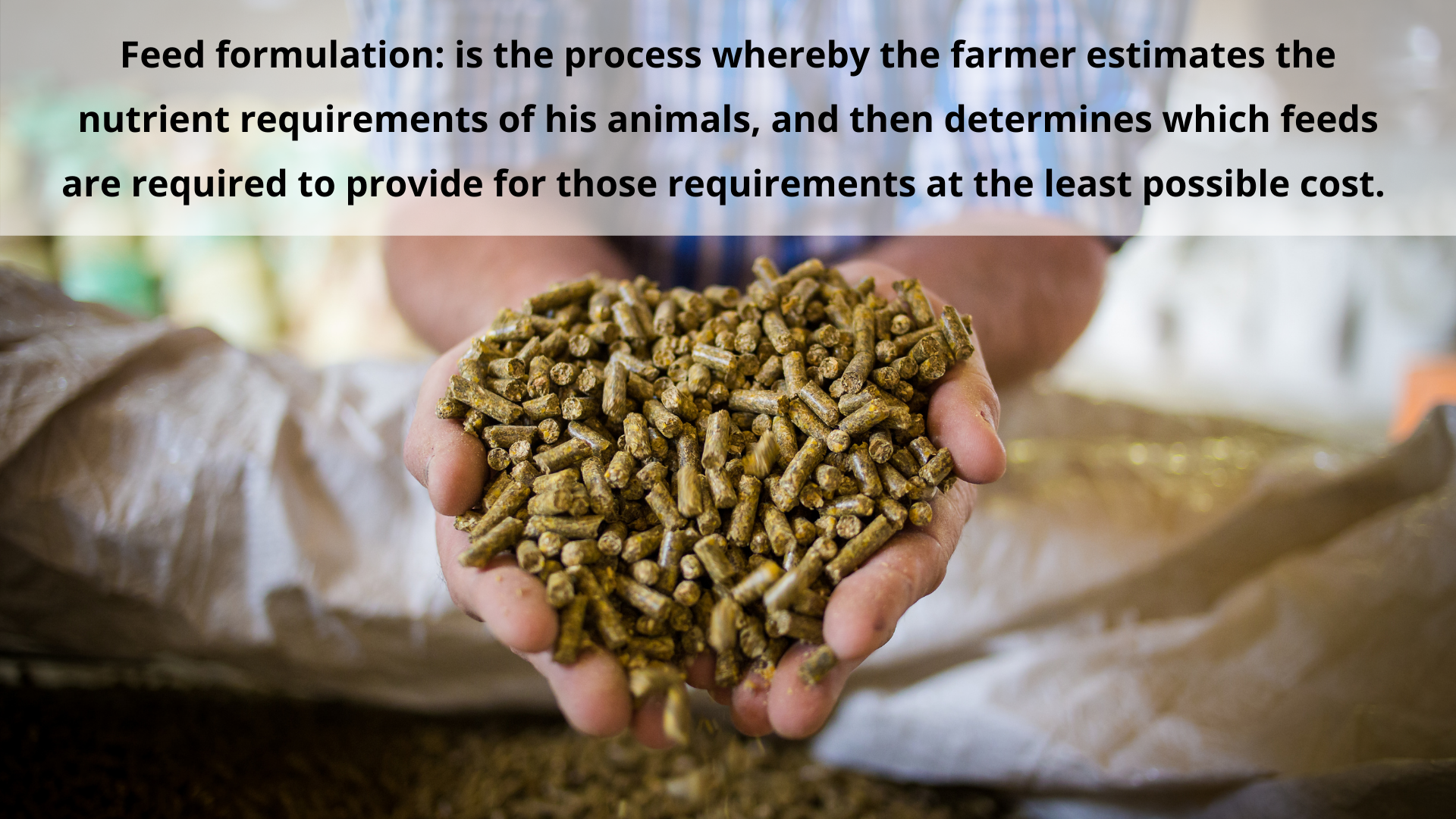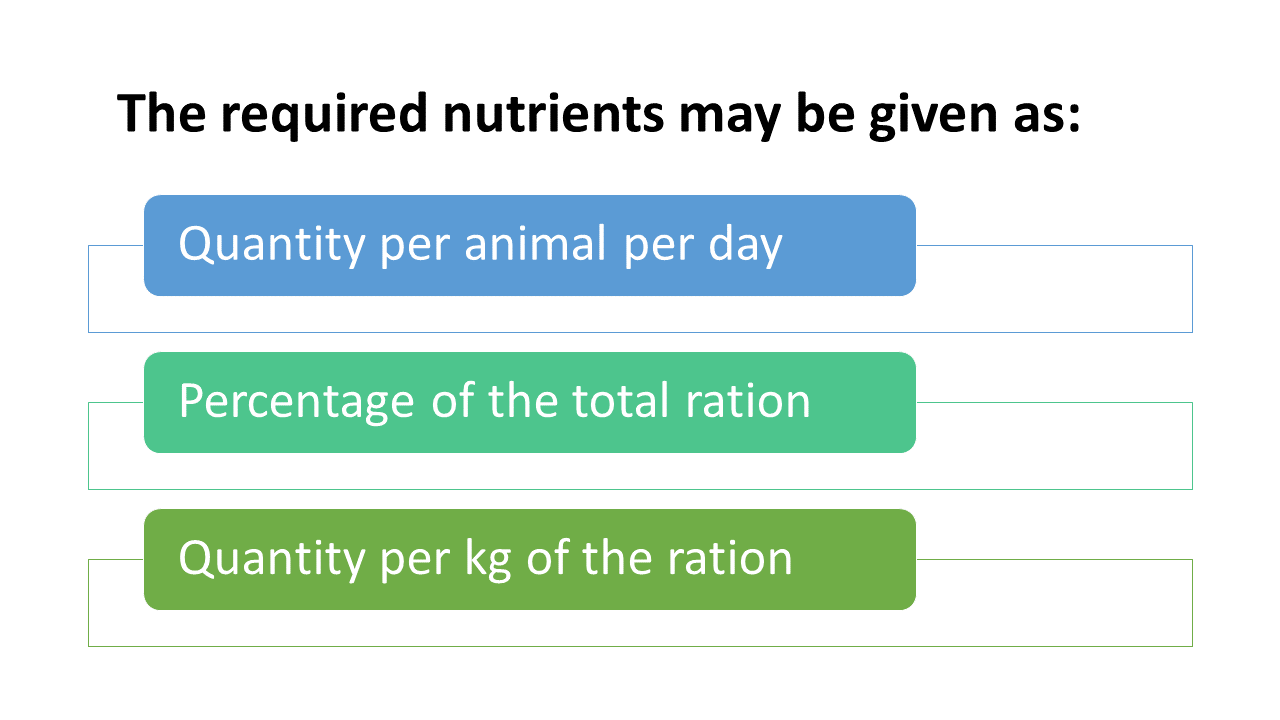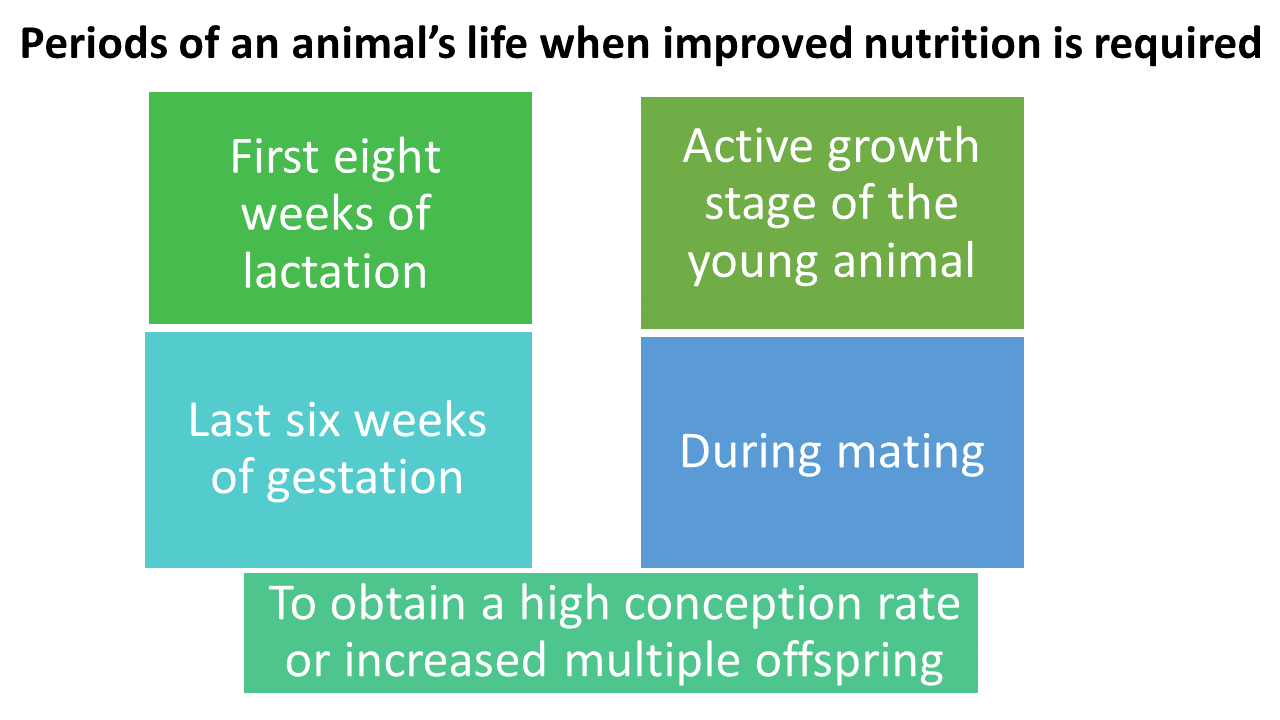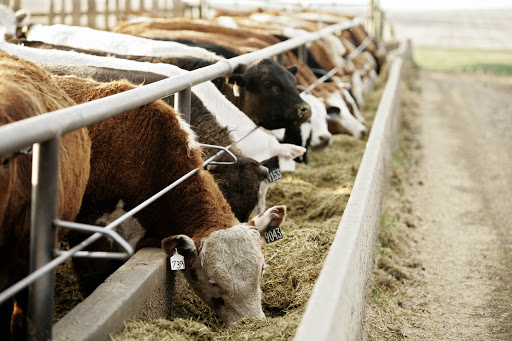
The cost of feed generally makes up approximately 70% of the costs of a livestock operation. Whether the farmer is producing the feed on the farm or purchasing the feed from outside sources, feed provision to the herd carries a cost. Feed formulation is the process whereby the farmer estimates the nutrient requirements of his animals, and then determines which feeds are required to provide for those requirements at the least possible cost. To do this the farmer will obviously need to know:
- What feeds he currently has available?
- The quantity and quality of the available feeds.
- The nutrient requirements of his/her animals.
- The stage of production and level of production of his/her animals (high milk producers vs. low milk producers or dams carrying singles or dams carrying twins).
- The shortages in nutrients that may occur.
- Which feed resources can be used to supplement the shortages?
- The costs of feed production, mixing, supplementation or outright purchase (including costs of transport and storage).
- The seasonality of feed production and seasonality of feed purchase.
Since feed is the greatest input cost in a livestock operation, one of the main management functions of a livestock farmer is to manage, control and monitor the management of feed to ensure efficient utilisation with little wastage at minimum cost and highest production. Feed management is not a once-off event but a daily management task on the livestock operation. To effectively control the costs of this input every farming enterprise should have a well-designed feed flow program in place.
A maintenance ration is one, which provides sufficient nutrients for the maintenance of the essential processes of life. The animal will remain in good health without a decrease or increase in body mass. Maintenance requirements are mainly dictated by the body mass of the animal.
A production ration is one that provides nutrients over and above the maintenance ration to ensure the production of a certain product. Products include growth (meat), milk, young and fibre.
Various “Nutrient Requirement” tables are available. These differ mainly in the manner in which the nutrient requirements of the various animals were determined but are essentially the same. The feeding standards presently used include the:
- National Research Council (NRC) USA.
- Agricultural Research Council (ARC) Britain.
To interpret the tables, the farmer needs to know how old the animal is, how much it weighs, and its stage of production. For example, the animal in question may be a mature ewe, weighing 60 kg, with twins in the first 8 weeks of gestation. The tables will provide the nutrients (dry material, metabolizable energy, and crude protein) required by the animal at the specific stage of production. The required nutrients may be given as:

While reading and interpreting Nutrient Requirement tables is an important skill, a farmer should inherently know that there are certain periods of an animal’s life when improved nutrition is required. Such periods include:
- During mating
- In order to obtain a high conception rate or increased multiple offspring, the female should be in good condition during the mating season. Flush feeding assists to increase the ovulation rate (multiple ova are released).
- The last six weeks of gestation - The nutritional requirements of the female increase drastically during this period because most of the development of the foetus occurs during this time. Poor nutrition during this period may lead to metabolic disturbances such as ketosis (domsiekte) in the female or the birth of small lambs/calves which are weaker.
- The first eight weeks of lactation - The female has the greatest nutrient requirements during this time since the young are almost totally dependent on the female during this period.
- Active growth stage of the young animal - A high-quality feed should be fed to young animals because the requirements for growth are high and the rumen capacity at this stage is still a limiting factor. Poor nutrition during this stage can lead to permanent stunting of the animal. Differences of nearly 20 percent in mature body mass were obtained as a result of differences in nutritional treatment prior to four months of age. Also, the influence of pre-and postnatal treatments was additive. This means that if the mother is fed well in the last few weeks of pregnancy, and the young that are born are strong, then, if the young are also fed well up to weaning, the final result will be even stronger and healthier offspring.

Although it may seem logical that some periods of an animal’s life have lower nutrient requirements, do not be fooled! For example, during the dry period a pregnant dairy cow needs to build up reserves in the form of fat, muscle, tissue and bone for the stressful high production period to follow. Also, although the production of fibre does not necessarily require increased nutrient supply, feed provision/nutrient supply should be constant to avoid breakages or weak areas in the fibre. Since sudden changes in weather can negatively affect feed intake, fibre producing animals should be fed slightly above maintenance requirements to ensure a buffer for sudden stressful periods which may negatively influence fibre quality.

Nutrient Requirement Tables the Units for Protein and Energy are expressed as follows:
Crude Protein
Crude Protein is an estimate of the percentage of protein that is contained in a feed based on the analysis of N contained therein. Some tables also present protein as Digestible Protein. That is the part of the ration that is assimilated by the animal when the food is digested. This value will usually be lower than the estimate of Crude protein, since some protein may not be nutritionally available to the animal, although it is present in the feed. Digestible protein is of particular importance to dairy farmers who need more accurate estimates of a feed’s protein content since milk production is dependent on adequate protein provision.
Energy
Energy values of food are presented as either total digestible nutrients (TDN) or Metabolizable Energy ME. The TDN is expressed as a percentage of the ration. Energy is expressed in (ME) Mega Joules per kilogram of metabolizable energy.
Click here to view a video that explains basic cattle nutrition.
Click here to view a video that explains, what do cattle eat: diet formulation and nutrition